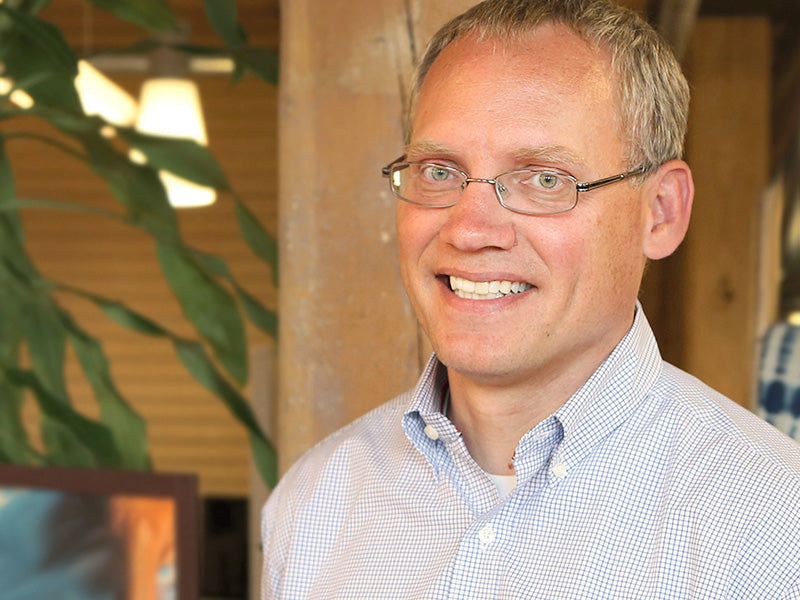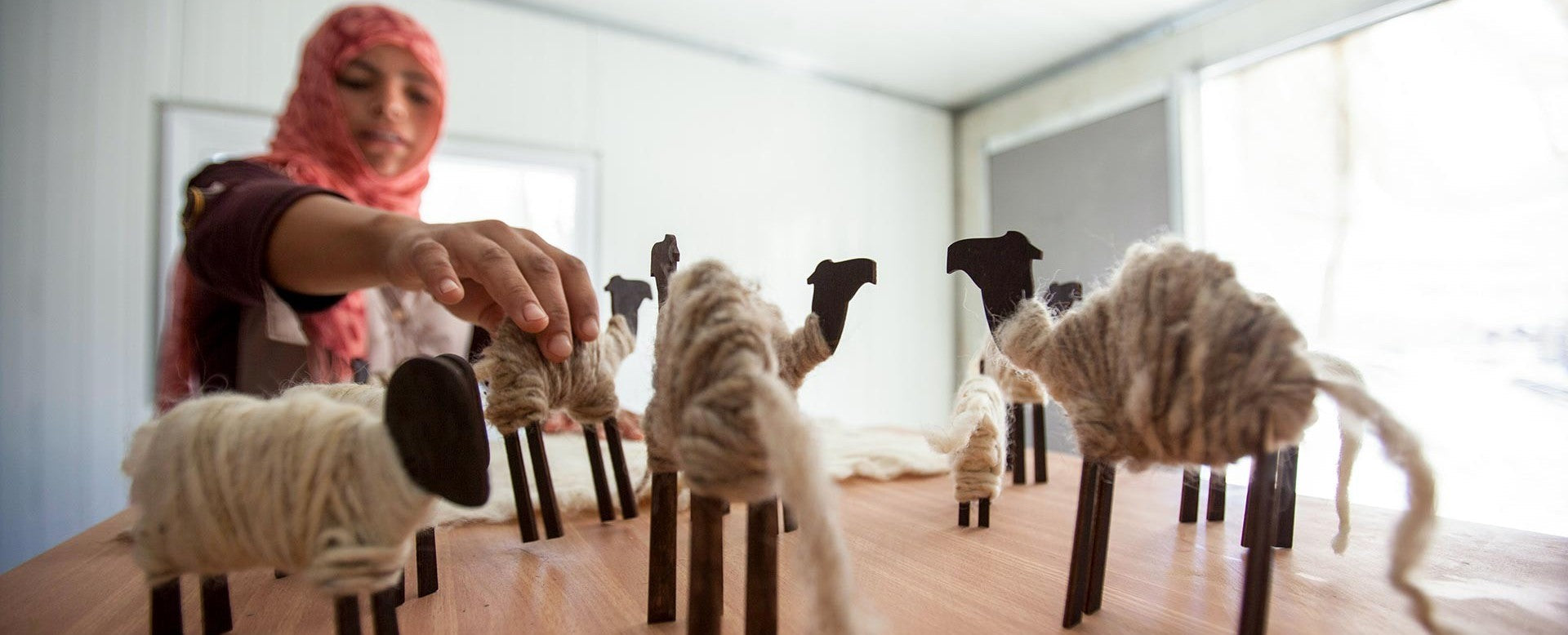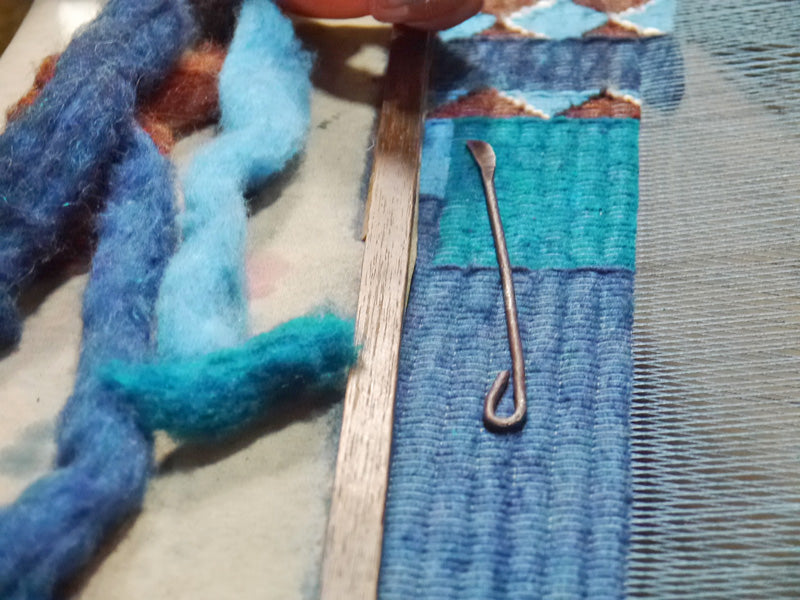A Conversation with our CEO


Last month, Carl Lundblad was named Chief Executive Officer of Ten Thousand Villages. (You can read his letter to the Ten Thousand Villages community of customers here.) Recently, we sat down with him to talk about why he is so excited to be here and what’s ahead for Ten Thousand Villages.
Q: You were in law and banking before… why the switch?
I led corporate strategy and legal affairs at Susquehanna Bank up through our merger with BB&T. So fair trade retail definitely seems a significant change, doesn’t it? It’s amazing how our life journeys unfold. Twenty-five years ago, I wouldn’t have seen myself in banking. At one point, I thought I would work in the foreign service or something else dealing with international relations. I studied political science
Q: Is that what drew you to Ten Thousand Villages?
That was definitely a big part of it, yes. We have that larger purpose. This is a very clear opportunity to connect business and mission.
I’ve also been drawn to international development; that’s part of my family’s history and culture that I haven’t had a chance to explore much, but I have had a strong interest in it. And our specific approach to development at Villages really resonates with me; the impact on individual lives and families is inspiring and, honestly, has already impacted me personally to a degree that I didn’t expect. So, for example, to know that because of our work with a group at a leprosy colony in India, and our purchase of the beautiful tablecloths, napkins and other linens they make, women who would otherwise be considered unemployable are taught how to weave and can earn their own income and use that income to obtain modest housing, proper medical care and an education for their children … what an incredible privilege it is to play a part in that story!
Q: What is the global aspect of your family’s history?
My father’s parents went to what is now the Democratic Republic of the Congo as missionaries in the 1930s, so my dad spent most of his childhood there. As I grew up we occasionally had missionaries and others visiting from various parts of the world, and our home was filled with African paintings and artifacts like masks and drums. As a child, I used to play “Kisolo”
Q: What is it about the Villages model that appeals to your business sense?
It’s a way of addressing poverty using commercial markets rather than charity. We are paying a fair value for products produced at a fair wage to help ensure people have fair living conditions. Yes, we are a nonprofit organization doing development work, but we are doing it in a way that is really focused on empowerment – we are facilitating a market that creates opportunities for individuals to earn their own income. Whether its artisans overseas or our employees here, empowerment is an important concept to me as a leader.
Q: Describe the way you approach leadership.
I try to adhere to a servant leadership model, which was taught and modeled for me by strong leaders and mentors over the years. It starts with the idea of sharing a great purpose – the “why” we do what we do. We have a very clear understanding and vision of that purpose here at Villages. And when you identify your great purpose, and you are willing to demonstrate sacrifice to achieve that purpose, you can start raising the bar of expectations – and that’s where good things really start to happen.
Q: Why is raising the bar so important?
If the status quo is always OK then we never know what is truly possible; we never have that experience of being stretched, of needing to use all of our God-given talents, and reaching that goal that seemed so out of reach. The greatest joy I get as a leader is seeing other people succeed. To see someone discover their own abilities and potential by achieving something they might not have thought possible, there’s something really special about that. But you can’t reasonably expect to raise the bar without removing obstacles—structures or policies or processes or lack of opportunities or resources —that stand in the way of progress. And finally, and this is sometimes the hardest part, whether because we lack the time or the inclination, it is essential to pause and celebrate our successes.
Q: What successes is Ten Thousand Villages celebrating right now?
There are some really exciting things happening! We have three pop-up stores open for the summer and plans for additional pop-ups in the fall. These are temporary locations in seasonal shopping areas that give us a chance to introduce new customers to Ten Thousand Villages and invite them to be part of our mission. Several teams worked together to execute this strategy and we are very pleased with the response to these locations already. We are filling key positions and building a strong leadership team. We are telling more effective stories about the impact of customers’ purchases, sales of our new product introductions are strong and our overall financial condition and sustainability is significantly improved.
Q: What have you found most challenging?
The first several months I was here were a time of significant transition for the organization. We implemented a lot of changes aimed at the future sustainability of Ten Thousand Villages. Some of those changes required very difficult decisions that impacted members of our community, but they were steps that were critically necessary to sustain our mission. We’ve re-shaped how the organization looks a bit, but we haven’t changed what we do and, certainly, we haven’t changed why we do it. We are now in a much better place to consider, very strategically, how we can grow sales so we can increase our purchases from our artisan partners and continue to fulfill our mission.
Q: What opportunities do you see for fair trade and Ten Thousand Villages?
Fair trade is growing, and while the movement — I don’t think of it as a sector or industry, it really is a “movement”—faces some challenges, interest continues to rise. Consumers want their purchase to be more than a transaction; they want it to have meaning and significance. So companies are working to show their customers how they are making a difference in the world, which is great, but in some cases it feels like it’s an afterthought, not necessarily integral to what they do. For us, that purpose and meaning is core to our business. It’s authentic, part of our DNA, and we have an opportunity to clearly communicate that to the consumer.
And at the same time, there is a growing demand for retailers to deliver an experience to customers, both in brick and mortar and ecommerce channels. With all the stories we have to share about our unique products, with all the partners we work with around the world and cultures we bring together and the impact we make, together with, and really because of our customers’ participation, we can deliver an experience that is really very unique.
Q: What else do you see as a unique strength for Ten Thousand Villages?
We have an incredible legacy of relationships with all our constituencies — from our artisan partners, and vendors, to our contract stores and their boards and volunteers, to our alliance wholesale accounts and other partners in the fair trade movement. And of course, and most importantly, our customers – from the longtime customer who has faithfully supported our mission through her purchases at the local store over many years, to the customer who was just introduced to us, either in her local store or online. But they’re not just customers, they become members of our community.
Q: Do you have a favorite product?
I can’t choose a favorite product! That’s not fair! My wife and I have enjoyed finding all kinds of beautiful gifts for our friends and family at the stores we visit. I will tell you what my kids really like, though!
We have twin boys, age 14, and they think the products made with recycled materials are really cool. They’re unique, and they have a great story about impact for makers and the environment. In fact, we just hung up a circuit board clock in my son’s room. And my 5-year-old son has tried out the musical instruments – drums and xylophones – in just about every store we’ve visited! And that’s what it’s all about—the experience. I love being able to show them how work isn’t just work for me, the choices we make matter in the lives of people on the other side of the globe, that there is a bigger world we belong to.
Read Carl Lundblad’s letter to the Ten Thousand Villages community of customers here.






Comments